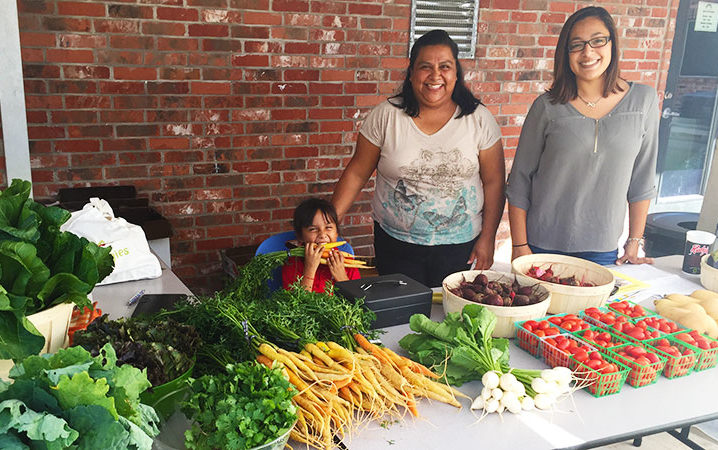 Farm stand facilitators in Austin, TX make fresh vegetables available to community members. Photo credit: FFAR.
Farm stand facilitators in Austin, TX make fresh vegetables available to community members. Photo credit: FFAR.
Federal nutrition programs can help bridge gaps in access to healthy food by providing families in need with emergency and supplemental access to sustenance.
Millions of Americans struggle each day to access fresh, nutritious food; access and affordability tend to be the most challenging barriers to a healthy diet, though there are also many other challenges that vary from person to person and community to community. Disparities in healthy food access directly contribute to increased levels of obesity and preventable diet-based diseases in underserved communities. In the U.S., these disparities are inextricably linked to issues of racial and social inequity.
Whether through the Supplemental Nutrition Assistance Program (SNAP), school meal programs, or farmers market programs, federal nutrition programs are critical component of our nation’s social safety net. Advocates across the country are actively working to ensure that federal food safety net programs, provide access to fresh, healthy, and culturally relevant foods.
Increasingly, community advocates are finding success in improving access to healthy food by teaming up with local food and sustainable agriculture organizations. One particularly effective means for improving healthy food access is to improve the links between consumers and family farmers growing in their region. In order to build and then strengthen these customer connections, farmers need access to effective tools and resources to bring their product into local markets.
In many cases, producers trying to break into local/direct markets struggle to form relationships across the value chain that will help them build their business. In other cases, the infrastructure needed to link producers to consumers may be minimal or absent entirely. Producers may also struggle with how to meet the price points of SNAP/WIC users and seniors who may rely on restricted federal benefits to supplement limited budgets for food purchases.
Over the last several farm bill cycles, the National Sustainable Agriculture Coalition has worked to advance policies and programs that support policies and programs that create new market opportunities for family farmers and provide access to healthy food for low-income consumers. Most recently, our advocacy resulted in a 2018 Farm Bill that made significant investments in programs that expand healthy food access, including the Gus Schumacher Nutrition Incentives Program and the Healthy Food Financing Initiative. This section of our guide provides an overview of the key federal programs focused on increasing healthy food access. To learn more about local and regional food system-focused programs, check out the Local & Regional Food Systems and Rural Development portion of the Guide.

